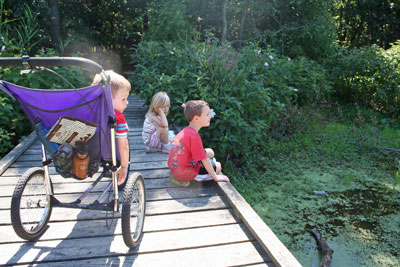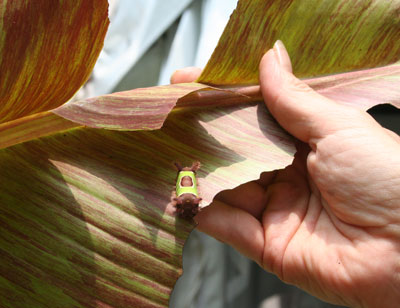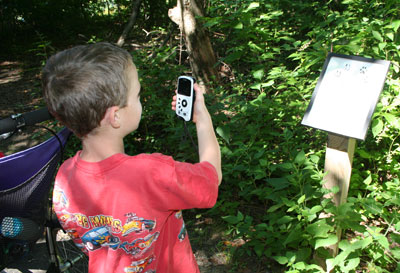It is my pleasure to introduce you to today's guest blogger, Barb, from A Life in Balance. You can usually find Barb blogging about life, food, local finds, frugal living and everything in between. Today, she shares the many ways we can connect with our children and nature as spring blooms all around us.
 One of our favorite family activities which has grown out of our time as a homeschooling family is taking nature walks. These types of walks work well with a range of ages since even ittle ones can learn about the natural world around them by looking for animals like squirrels or chipmunks or by identifying the more common wildflowers and trees in their area.
One of our favorite family activities which has grown out of our time as a homeschooling family is taking nature walks. These types of walks work well with a range of ages since even ittle ones can learn about the natural world around them by looking for animals like squirrels or chipmunks or by identifying the more common wildflowers and trees in their area.
To get started, try taking walks in the different habits in your area. For example, our hometown area, the Delaware Valley, is home to a fresh water marsh, salt water marsh, meadows, mountains, and woods. The fresh water marsh is the source for walks throughout the year since it serves as a stopping point for birds migrating in the spring and fall. The other spots can be visited seasonally to see what changes have occurred. Toddlers can look for leaf buds, common birds, or the first flowers. Preschoolers can be introduced to the concept of seasons. They can also begin to differentiate between the different types of environments.
Toddlers can look for leaf buds, common birds, or the first flowers. Preschoolers can be introduced to the concept of seasons. They can also begin to differentiate between the different types of environments.
Elementary students and up can use nature journals to help them hone in on details in the environments such as leaf shapes, different types of birds, and wildflowers. They're ready to understand concepts like the cycle and the roles the different members of the environments play. Elementary students can also learn about recycling and how to preserve the environment for others.
Ways to Extend the Walk:
- Make small file folder books to use as nature journals for each walk.
- Start a regular nature journal with a sketch book from an art store.
- Learn bird calls for your area. Petersen's Birding by CD is one resource our family has used.
 Have a visual scavenger hunt. Print out pictures of birds, flowers, or trees to look for and have the kids match them up with the pictures.
Have a visual scavenger hunt. Print out pictures of birds, flowers, or trees to look for and have the kids match them up with the pictures.- Do leaf rubbings.
- Learn about animal tracks and make plaster casts of tracks you find.
- Take a walk at night and listen to the sounds of the nocturnal birds and animals.
- Buy your children disposable cameras if they're young or lend them your camera if they're old enough and take pictures of what they see. If you focus on a theme each time like documenting all the wildflowers you find, children are more likely to stay focused on the task. At the end of the year, combine all the photos into a book which could serve as a reference for future walks
- More Resources for Extending Your Walk
Places to go in the Delaware Valley:
Bartram's Garden * Fort Washington State Park * John Heinz Wildlife Refuge * John James Audubon Center at Mill Grove * Hildacy Far Preserve * Morris Arboretum * Ridley Creek State Park * Scott Arboretum at Swarthmore College * Tyler Arboretum
Happy Walking!
Barb is a mom of 5 kids who spends her day keeping track of socks, stuffed animals, library books, and a 3 year old when she isn't writing about all the frugality, gardening, cooking, and reading she manages to fit in between the chaotic moments. See how she holds down the fort and saves a few dollars at A Life in Balance.